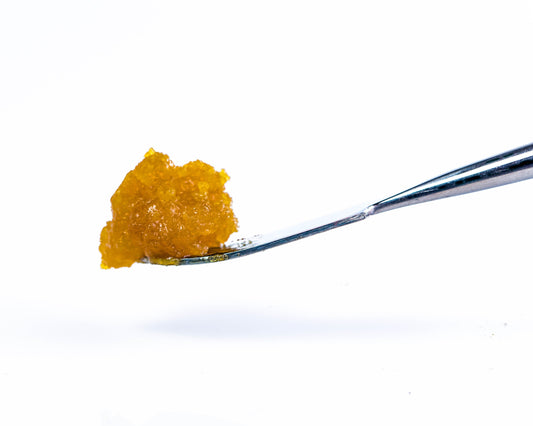Hemp growing has come a long way from its clandestine past, and today, it thrives under the sun and open skies. In this blog, we’ll start with an overview of how outdoor hemp is grown. Then we’ll examine the impact of climate and latitude and end with a discussion about the environmental and sustainability advantages of outdoor grown hemp.
What is Outdoor Grown Hemp?
Outdoor grown (a.k.a. ‘sungrown’) hemp refers to the cultivation of hemp plants in their natural environment, exposed to the elements and sunlight. This method relies on the sun as the primary source of light and utilizes the local climate and soil conditions.
Hemp, like all members of the ‘cannabis sativa L.’ family, is a photosensitive plant. This means that it has a distinct flowering stage triggered by the amount of light it receives. During the long days of early summer, outdoor hemp quickly grows taller and bushier, putting its energy into the roots, the stems, and the leaves; this is called the ‘vegetative stage.’ At a certain point in the early fall, the days become short enough to trigger the ‘flowering stage’; this is the period when the plants put their energy into growing flowers. In the right environment, outdoor plants will produce heavy flower colas dripping with resinous cannabinoids and terpenes. So what are the right conditions?
Outdoor vs greenhouse vs indoorThe Significance of Latitude and Climate
The geographical location where cannabis is grown plays a pivotal role in shaping the plant's characteristics and quality. The importance of climate and latitude cannot be overstated in outdoor cannabis cultivation.
- Latitude Makes the Attitude: Hemp can be grown anywhere in the world, but it will only thrive in a very specific belt of latitude. This is because hemp plants are photosensitive, and latitude determines when the plants switch from their vegetative stage to their flowering stage. It’s important that the plants have just the right amount of time to grow their coveted sticky flowers. It takes 8-12 weeks to reach maturity from the onset of flowering, so the ideal latitude will trigger flowering in early August, leaving a perfect window for flowers to reach maturity before the rains come. Southern Oregon is part of the Emerald Triangle, a region perfect for cannabis growing with a latitude of 43 degrees.
- Sunlight as the Mighty Sculptor: One of the most significant advantages of outdoor cultivation is the abundant, natural sunlight that hemp plants receive. Sunlight provides an unmatched spectrum of light, essential for the plant's growth. Different regions offer varying levels of sunlight, which can significantly impact potency and flavor. Sun-kissed regions like southern Oregon produce strains with intense terpene profiles and high cannabinoid content. Relying on sunlight also allows cultivators to spend less on growing and offer lower cost products to consumers.
- Temperature and Seasonal Variation: Outdoor cultivation allows cannabis plants to experience natural seasonal changes. These variations in temperature and humidity contribute to the plant's resilience and help create unique characteristics. Cooler regions can produce strains with a more robust and earthy flavor, while warmer climates may result in sweeter and fruitier profiles. When plants are exposed to temperature variation over the course of a full growing season, the flavors take on the best of both worlds.
- Rainfall and Water Source: The water source and rainfall patterns in a region also affect cannabis cultivation. Areas with ample rainfall can support lush and vigorous growth, while arid regions might necessitate water conservation practices. During the late flowering period, it’s critical that the plants aren’t exposed to too much moisture or else mold will ruin the crop.
A Sustainable Future for Hemp and the Environment
The environmental benefits of outdoor cannabis cultivation are remarkable, making it a preferred choice for ecologically conscious cultivators and consumers.
- Lower Carbon Footprint: Outdoor cultivation relies on natural sunlight, reducing the need for artificial lighting and climate control. This significantly lowers the carbon footprint compared to indoor and greenhouse cultivation, which can be energy-intensive.
- Reduced Water Usage: In regions with natural rainfall, outdoor cultivation uses rainwater as the primary water source, significantly reducing the need for irrigation. Water conservation practices are often integrated, such as collecting and reusing rainwater or using drip irrigation systems.
- Organic and Regenerative Practices: Many outdoor cultivators adopt organic and regenerative farming practices. These methods prioritize soil health, biodiversity, and sustainability. By using composting, cover cropping, rotational grazing, and other sustainable farming methods, they strive to create a balanced ecosystem.
- Biodiversity and Ecosystem Support: Outdoor cannabis cultivation can coexist with local ecosystems, benefiting local wildlife and plant life. It can even serve as a buffer against deforestation and other destructive land uses. Some outdoor growers go the extra mile to protect and enhance their natural surroundings, fostering a harmonious relationship with the environment.
Hemp plants thrive at 43 degrees latitude in southern Oregon. These photosensitive plants begin their ‘flowering stage’ in mid August when the days become shorter. The resinous flowers are harvested 8-12 weeks later.
Conclusion: Regenerating Body & Soil
Outdoor grown hemp flower embodies the synergy between nature, cultivation expertise, and sustainability. It offers a unique product with distinct characteristics that reflect the terroir and climate of the region. Outdoor cultivation has emerged as a sustainable and ecologically friendly approach to producing high-quality hemp. As the cannabis industry continues to evolve, outdoor cultivation represents a refreshing return to nature, emphasizing the importance of preserving our planet while enjoying the green glory of this amazing plant!
Shop THCa Flower







